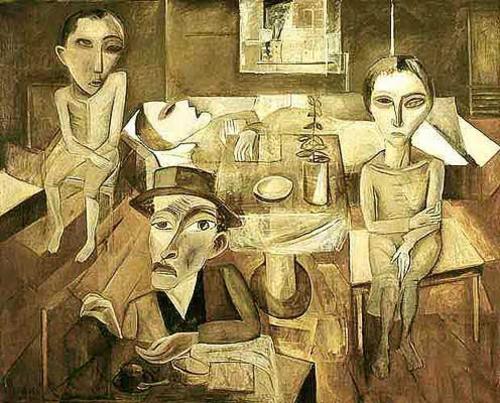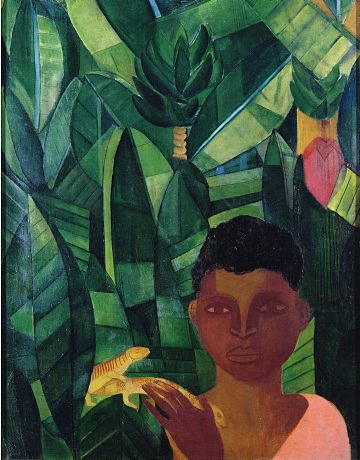Domingos de Moraes is a busy, bustling, industrialized street with lots of small stores. But turn a corner onto Rua Berta, and it suddenly, shockingly, turns into a refreshingly peaceful residential street with ivy crawling on the walls and palm trees overflowing with coquinho.
This is where you’ll find the Museu Lasar Segall, a small but beautiful art museum dedicated to the artist Lasar Segall. Segall was born in a Jewish ghetto in Lithuania, and moved to Germany at 15 years old in 1906. Influenced by Cubism, he started to explore his Jewish identity and created works mainly about persecuted groups. In 1912 he joined his family in São Paulo. In Brazil, he was heavily influenced by the plantations, favelas (or shantytowns) and poor working blacks, as well as emigration and human suffering.
When you enter, you immediately step into the lush garden featuring sculptures by Segall. Before viewing any of his works, you instantly get a sense of who he is as an artist.
The garden currently features an art installation by Marcelo Moscheta called Inverno or Winter. This piece is part of a series of installations in the museum’s garden with the intention of having the public reflect on the relationship between the architectural space, public space and visual art.
Moscheta took leaves from the museum garden that are normally swept up and disposed of, and pressed them onto white clay with the idea “to prolong the fragile existence of life in the garden, no longer inhabited by its original owner, but relived through the public that moves through and activates the museum everyday.” He goes on to explain that the word winter “carries the idea…of the conservation of things, of hibernation, to guard against and protect.”
The features exhibit was Noites Brancas: Dostoiévski Ilustrado or White Nights: Dostoyevsky Illustrated, a series of drawings, illustrations and engravings either inspired by Dostoyevsky’s works or appearing in editions of Dostoyevsky’s works. Full disclosure: I have not read a single thing by Dostoyevsky. But that didn’t stop me from enjoying this exhibit. As much as I can appreciate a 24 foot tall painting, I think it’s interesting what can be conveyed through a more subtle, black and white drawing.
The museum is a small, quiet pocket of art and nature seemingly tucked away from the busy streets. It’s sort of a secret garden that preserves the memory of an artist captivated by the tropical nature and harsh reality of his new home. And with the library, workshops and courses offered, it seems that creation, both artistic and natural, is infinite in possibility.









